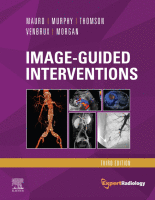Physical Address
304 North Cardinal St.
Dorchester Center, MA 02124

Venous thromboembolism (VTE) is a significant cause of morbidity and mortality. The most feared condition is pulmonary embolism (PE) resulting from deep vein thrombosis (DVT) dislodging from the lower extremity or pelvis, or, less commonly from the upper extremity, embolizing…

The importance of portal vein thrombosis (PVT) lies mainly in the complications of prehepatic portal hypertension, which in the chronic state causes bleeding through varices. Acute PVT is the main cause of prehepatic portal hypertension in the Western world and…

Acute Lower Extremity Deep Venous Thrombosis The annual incidence of venous thromboembolism, including both deep vein thrombosis (DVT) and pulmonary embolism, is estimated at 300,000 to 600,000 per year. Postthrombotic syndrome (PTS) is a common late complication of lower extremity…

Venous thromboembolism—comprising pulmonary embolism and deep venous thrombosis (DVT)—is a common disease with a high recurrence rate. The incidence rates of venous thromboembolism in Western countries range from 8 to 27 per 10,000 person-years. The reported incidence of clinically diagnosed…

Superior vena cava (SVC) syndrome is a clinical entity with varied presentation and severity caused by obstruction of the central veins and superior vena cava. The condition can result from either malignant or benign etiologies. Benign etiologies include catheters or…

Cervical artery dissection involving the extracranial carotid and vertebral arteries is an infrequent cause of stroke but accounts for a significant percentage of ischemic strokes in young adults: 20% to 25% of strokes in those younger than 45 years of…

Traumatic head and neck vascular injuries such as dissections, transections, pseudoaneurysms, arteriovenous fistulae, and large artery occlusions are relatively uncommon but can result in potentially devastating stroke, severe blood loss, and even exsanguination and death. Rapid, early diagnostic imaging followed…

Patients who present to an emergency department with thunderclap headache often described as “the worst headache of my life” should always prompt treating physicians into assessing for an acute subarachnoid hemorrhage (SAH). In up to 80% of patients with SAH…

Clinical Relevance Epistaxis is a common condition. Hemorrhage usually occurs anteriorly in the nasal cavity from the anterior nasal septal region. Most hemorrhages are mild and self-limiting and will resolve spontaneously. If hemorrhage continues it usually can be controlled by…

The types of masses encountered in the head and neck are diverse, as are their appropriate treatments. Some benign head and neck lesions are treated primarily by surgical means without endovascular intervention. For example, when possible, hemangiomas are commonly excised…